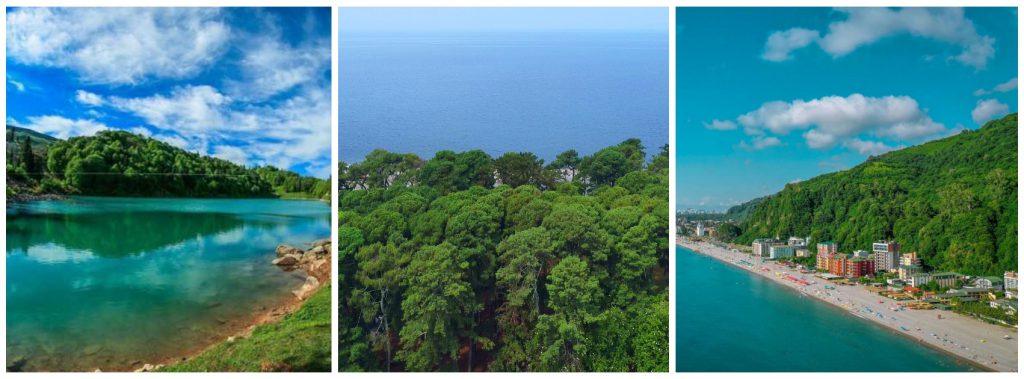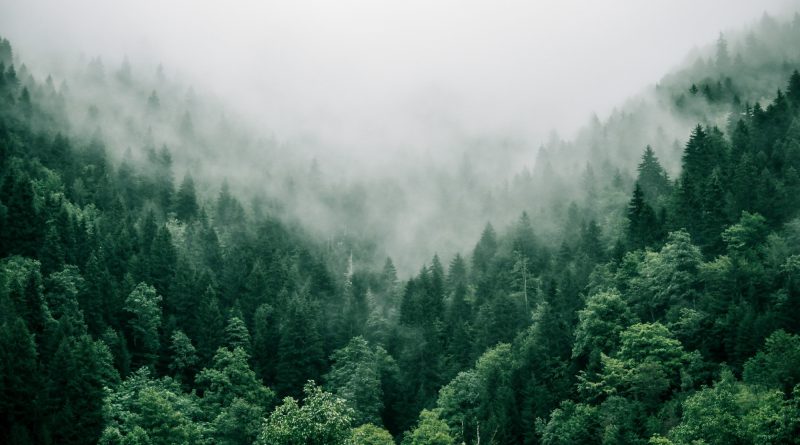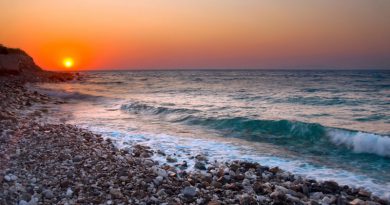Mountainous Adjara
Adjara is a place where the sea, mountains and interesting traditions are united.
Khelvachauri, Keda, Shuakhevi, Khulo and Kobuleti will offer completely different impressions. Each municipality is distinguished by its rich culture and traditions, as well as delicious dishes typical for only them.
Khulo
A small town in the Autonomous Republic of Adjara, the administrative center of Khulo Municipality. Located on the gorge of the river Adjaristskali, on the Akhaltsikhe-Batumi highway, 923 m above sea level.
Distance from Batumi: 85 km
Area: 710 sq/km
Population: 1007 thousand (data of 2014).
Khulo is the most mountainous municipality in Adjara, which is rich with its historical sights, such as Khikhani Castle and Skhalta Monastery, built in the Middle Ages, with its flora and fauna, natural resources, and mineral waters.
The municipality is famous for its resorts: Beshumi, Goderdzi and Kedlebi. Among the natural sights of Khulo is the Green Lake, which is located 6 km from the resort Goderdzi, and in a few kilometers from the resort Goderdzi there is an alpine botanical garden. When you get to Khulo you should definitely taste the traditional dishes typical for this corner: kaimagi, borano, sinori, naghbibora and others.
Tourist facilities:
- Alpine Botanical Garden;
- Khikhani Castle (XII);
- Tsikhiskeli-Vartsikhe complex (XI);
- Skhalta Monastery (XII);
- Uchkho Bridge (XI-XIII);
- Sheriff Khimshiashvili Museum in Skhalta gorge.
Shuakhevi
A borough, the administrative center of Shuakhevi municipality. It is located at the confluence of Adjaristskali and Chirukhistskali rivers, 420 m above sea level, 67 km from Batumi. It received the status of a borough in 1974.
Distance from Batumi: 67 km
Area: 588 sq / km
Population: 797 thousand (data of 2014).
Typical Adjarian district Shuakhevi is located on the Meskheti and Shavsheti ridges. The locals are mainly engaged in agriculture, animal husbandry and tobacco growing. Chvani gorge, Mareti, Nigazeuli, Gomarduli, Khabelashvilis and Nenia are distinguished villages of Shuakhevi municipality.
Tourist facilities:
Castles: Nigazeuli (XVIII); Kaviani (XII-XIII); Okropirauli (XI-XII); Darchidzes (XII-XII centuries); Otolta (XI-XIII centuries); Chankhalo (XII-XIII); Tsinareti (XI-XII).
Bridges: Khabelashvili Bridge (XIX) and Varjanauli Arch Bridge (XII).
Oladauri Church.

Keda
A borough in the Autonomous Republic of Adjara, the administrative center of Keda Municipality. Located on the bank of the river Adjaristskali, at 256 m above sea level.
Distance from Batumi: 41 km
Area: 452 sq / km
Population: 1510 thousand (data of 2014).
Keda Municipality is considered to be the center of winemaking in Adjara. There are several dozen varieties of grapes, the most famous of which are Tsolikauri and Chkhaveri. Chkhaveri is a rare grape from which pink wine is made, while Tsolikauri is the most common white grape variety from which table wine Tsolikauri is made. In the villages of Keda district, where the population professionally pursues winemaking, it is possible to taste the above-mentioned wines directly in the cellars. Keda is rich in waterfalls such as the waterfalls of the villages of Merisi, Makhuntseti and Gobroneti, with rivers and historical sights, stone arched bridges, castles and temple remains, museums and traditional Adjarian villages.
Tourist facilities:
- Stone arch bridge in Makhuntseti (XII century);
- Stone arch bridge in Dandalo (X century);
- Land bridge in Sagoreti (XI-XII centuries);
- Tsivasula Castle (XII-XIII centuries);
- Sagoreti Fortress (XI-XII centuries);
- Fortress of Hearts (XII-XIII centuries);
- Zendidi Fortress (XVII-XIX centuries).
Khelvachauri
A settlement within the city of Batumi. It is located on Kakhabari plain, on the right bank of Chorokhi river, 80 m above sea level, 8 km from Batumi railway station. Khelvachauri and its area had been inhabited by people since the New Stone Age.
Distance from Batumi 9 km.
Area – 356 sq / km
Population – 6143 (data of 2014).
Machakhela is a historical gorge. It is famous for its Machakhela rifle and family dagger history, cultural-historical monuments and national park. Here you can meet the descendants of ancient craftsmen and learn from them about the peculiarities of making Machakhela rifle and dagger. In the gorge it is possible to visit Machakhela National Park. The park is located at an altitude of 300-350 m above sea level.
Tourist facilities:
- Machakhela Rifle Monument;
- Tskhemlara Arch Bridge (XII);
- Stone arch bridge in the village of Mirveti: (XII);
- Kokoleti Arch Bridge;
- Makho Bridge;
- Chkheri Arched Bridge (IX-X);
- World War II cannon and embrasure;
- Gvara Castle (VI);
- Chikuneti Fortress;
- Upper Chkhutuneti Historical-Ethnographic Museum;
- Holy Trinity Church;
- Panteleimon Church in Ortabatumi;
- St. Andrew the First-Called Medieval Church;
- Laz Ethnographic Museum.

Kobuleti
A city and resort in Georgia, in the Autonomous Republic of Adjara, the administrative center of Kobuleti Municipality. Located on the Kobuleti plain, on the Black Sea coast, 5 m above sea level.
Distance from Batumi: 32 km
Area: 711.8 sq. Km
Population: 16,546 (data of 2014).
Kobuleti is a climatic-balneological resort. The city has a humid subtropical climate, with mild, warm winters and hot summers. The average annual temperature is 13.4 ° C. The average temperature in January is 4.8 ° C, in July 22.4 ° C. Absolute minimum -16 ° C, absolute maximum 41 ° C. Precipitation is 2510 mm per year.
Therapeutic factors are: sea climate, swimming in the sea, sandy beach. Medical indications: non-tuberculous respiratory diseases, diseases of the nervous and cardiovascular systems, anemia, rachitis.
Kobuleti was considered a resort of Soviet importance in the Soviet Union. There were sanatoriums and boarding houses, most of which belonged to the Ministry of Defense. Kobuleti has grown in popularity since the 1990s, as it has become an alternative to Abkhazia’s resort area. Kobuleti is visited by about 100,000 tourists every year during the summer.
About 13% of the territory of Adjara is occupied by protected areas, reserves and national parks. Most of them are part of Kobuleti Municipality, which is distinguished by the diversity of flora and fauna. Kobuleti Municipality is also unique in that it has an amazing combination of pine trees, parks and the sea. The beach occupies the entire coastal area of Kobuleti. Parks and protected areas provide an excellent opportunity for both tourist hikes and scientific work. A striking example of this is the observation of migratory birds, in which dozens of scientists and hundreds of tourists from different countries take part.
The sea, mountains, forests and alpine lakes attract many travel enthusiasts. Kobuleti, Kintrishi and Tikeri reserves are located in the district. There are several lakes in Kobuleti, Tbikeli and Sirdzerdzali lakes are popular. Flowering fields, wildlife, pristine forests, lakes, waterfalls and extensive views. There are also many interesting and impressive cultural monuments in the municipality.
Tourist facilities:
- Tskhemvana and Kobalauri Arch Bridge (XII);
- Petra Castle (VI);
- Pichvnari town ruins;
- Ruins of temples built in different periods;
- Tbikeli Lake;
- Tsablnari waterfall;
- Mtirala National Park;
- Ispani peat.




